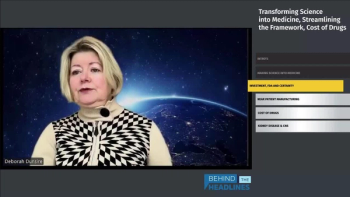
GSK Leads Big Pharma in Making Its Medicines Accessible
An index from the Access to Medicine Foundation ranks GSK as most effective in making products accessible.
The Access to Medicine Foundation, an independent nonprofit group based in the Netherlands, released its
The Foundation is funded by the Bill & Melinda Gates Foundation, the Dutch Ministry of Foreign Affairs, and the UK’s Department for International Development. Its goal is to use transparent metrics to show how effective pharmaceutical companies are in making their products accessible to more of the world’s people. These methods are refined continuously, with help from stakeholders that include the World Health Organization, non-government organizations, governments, universities, and institutional investors.The Foundation plans to introduce its Index to the generic pharma world in the future.
“After sharpening what and how we measure, we are now able to draw a much clearer picture of the industry’s strengths, weaknesses, progress and struggles, and what it takes to be a leader in access to medicine,” said Wim Leereveld, founder and CEO of the Access to Medicine Index, in a
And innovation needn’t require heft. “Companies that have the biggest market presence are not necessarily at the top of the Index. We found that four companies currently produce 50 percent of all the relevant products. However, they are scattered across the Index,” said Jayasree K. Iyer, head of research at the Access to Medicine Index, in a press release. “This means that what defines where companies rank has less to do with how many relevant products they have, than with what they do with their products and expertise.”
This year’s Index shows that the industry has stepped up its efforts on several fronts. For instance, it is paying more attention to socioeconomic factors, increasingly tailoring prices within countries. Since 2012, the number of products in the pipeline appropriate for developing countries has grown by 47, the Foundation reports.
More companies are experimenting with innovative access-oriented business models. Companies are granting more licenses to developing-country companies to make and distribute generic versions of their medicines. Meanwhile, policies and activities to improve access to medicine continue to get better organized.
However, progress is uneven in two important areas: ethical marketing and transparency of communications. Nearly all the 18 companies participating in this year’s Index have been the subject of settlements or judgments regarding breaches in ethical marketing, bribery or corruption standards, or competition laws in the last two years. During the period of analysis there were high-profile allegations of corrupt practices against several companies operating in China. The case against GSK, one of those companies, was settled after the period of analysis, and therefore did not affect its score in the 2014 Index.
Pharmaceutical company R&D is a crucial element of enhancing access to medicine. The 2014 Index shows that five companies are developing 54% of the 327 products in the industry’s pipeline. All disease classes are being targeted, but more than half of the products under development target just five diseases.
About 36% of the pipeline targets non-communicable diseases, which are becoming increasingly important in developing countries. However, plans to make these products available in developing countries are limited. Pricing strategies for them are also limited and lag behind those for many communicable diseases.
More than half of the companies are developing “child-size” medicines, as liquids, chewable tablets, child-appropriate doses, or new formulations.
Since the 2012 Index, at least 30 products from the pipeline, for 11 diseases relevant to developing countries, have come to the market. These include:
- A new type of pill for multi-drug resistant tuberculosis that is the first new drug for the disease in 40 years (Johnson & Johnson)
- A pill that can cure hepatitis C, which is a high-burden disease in developing countries. The company has issued licenses allowing distribution of generic versions of the drug in more than 91 developing countries (Gilead).
“Our company report cards identify a tailored path for each company to follow in order to maximize its opportunities for improving access to medicine. They all address access issues in different ways, but our analysis shows that all companies can do more,” Leereveld said.
Source:
Newsletter
Stay at the forefront of biopharmaceutical innovation—subscribe to BioPharm International for expert insights on drug development, manufacturing, compliance, and more.




